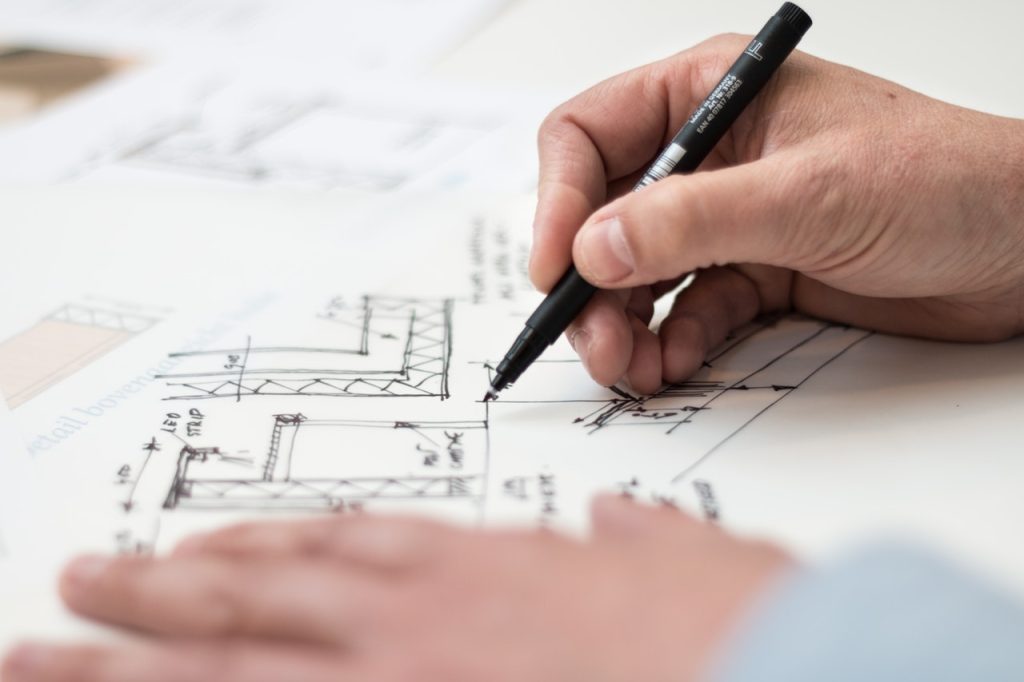A beginner’s guide to self-building your own home
When it comes to finding your dream home, your property search may not meet your expectations. You might not be able to afford what you want, or the perfect home you have in your head may simply not exist. One option that gives you the chance to create a home that is ideal for you is building your own property. If you’re creative, you know what you want, and you’re willing to wait a little longer to put down roots, self-building could be an excellent solution. If you’re not familiar with the processes involved, here’s a useful guide for beginners.
Finding a plot
A beginner’s guide to self-building your own home
Once you’ve decided that you want to build your own home, the next step is to find and then buy a suitable plot of land. Think about what you’re looking for from that patch, and then start searching for a plot that ticks all your boxes. Do you want rural land that boasts great views? Are you set on a specific location? Do you know what size plot you want? Once you’ve got the answers to these questions, you can look for areas that are for sale. Search online using plot finder services, and contact local agents to see if there are any plots available in your chosen area and ensure that you’re first to hear about upcoming opportunities. It’s always wise to go into a search with a budget in mind. With a self-build project, you’ll need to factor in the cost of the land, the cost of the build and labour fees. If you’re on the hunt for land, you’ll also need to notify the local authority. When you’ve found the ideal spot for your home, carry out searches to check viability for building, and be prepared to negotiate to get the best price.
Seeking planning permission and finding an architect
Even if you own a plot of land, you don’t have a legal right to start building until you have planning permission. If you do start without seeking approval for your plans, you could be ordered to take down any structures, and you’ll be liable for the cost of doing so. If you’re taking on a self-build project, you’ll probably submit outline plans and then detailed plans.
When you think you’ve found the perfect plot, and you’re ready to get started with the process of getting planning permission, you’ll need to find an architect. Ask around for recommendations, read reviews and testimonials, and look through portfolios to see examples of previously completed projects. Get some quotes from different architects, discuss ideas, and take your time to decide which architect is best for you. Hiring an architect will ensure that your home meets all the relevant building and planning criteria and it will also guarantee that your new property is structurally sound. Your architect may also have fresh, innovative ideas about layouts and unique features that could make your home even more spectacular.
Choosing a builder
A beginner’s guide to self-building your own home
When you’re investing a large sum of money into a self-build project, it’s natural to want to ensure that your home is in safe hands. Take your time to choose a builder and source contractors and go with reputable, reliable companies that have an excellent track record. Ask friends, colleagues, and neighbours for recommendations, make sure the businesses you look at are registered and fully insured, and compare quotes. The cheapest option is not always the best value for money, so it’s worth shopping around. Consider how you’re going to manage the project. Are you going to take the mantle of site manager to keep the cogs turning, or are you going to hire contractors?
Financing your build
If you plan to build your own home, you’ll need to work out how you’re going to pay for the project. Setting a budget is often more complex with a self-build because you have a host of different fees and expenses to incorporate into the total spend.
You’ll need to factor in the cost of the plot, building materials and labour costs, the cost of fitting out the house and decorating and architect and planning fees. It’s also hugely beneficial to have a contingency fund, just in case you encounter delays or setbacks. If you’ve taken out a mortgage to finance the build, you’ll also need to consider how you’re going to cover the repayments while the build is underway.
Most people who buy properties take out mortgages, and there is a specially designed mortgage product available to those who build their own homes. Self-build mortgages differ to conventional mortgages because they release money in phases over a period of time. In addition to taking out a mortgage, you could also look into borrowing money from a family member and then paying it back once the build is completed.
Are you interested in building your own home? If so, hopefully, you’ll find this guide useful.
A beginner’s guide to self-building your own home


